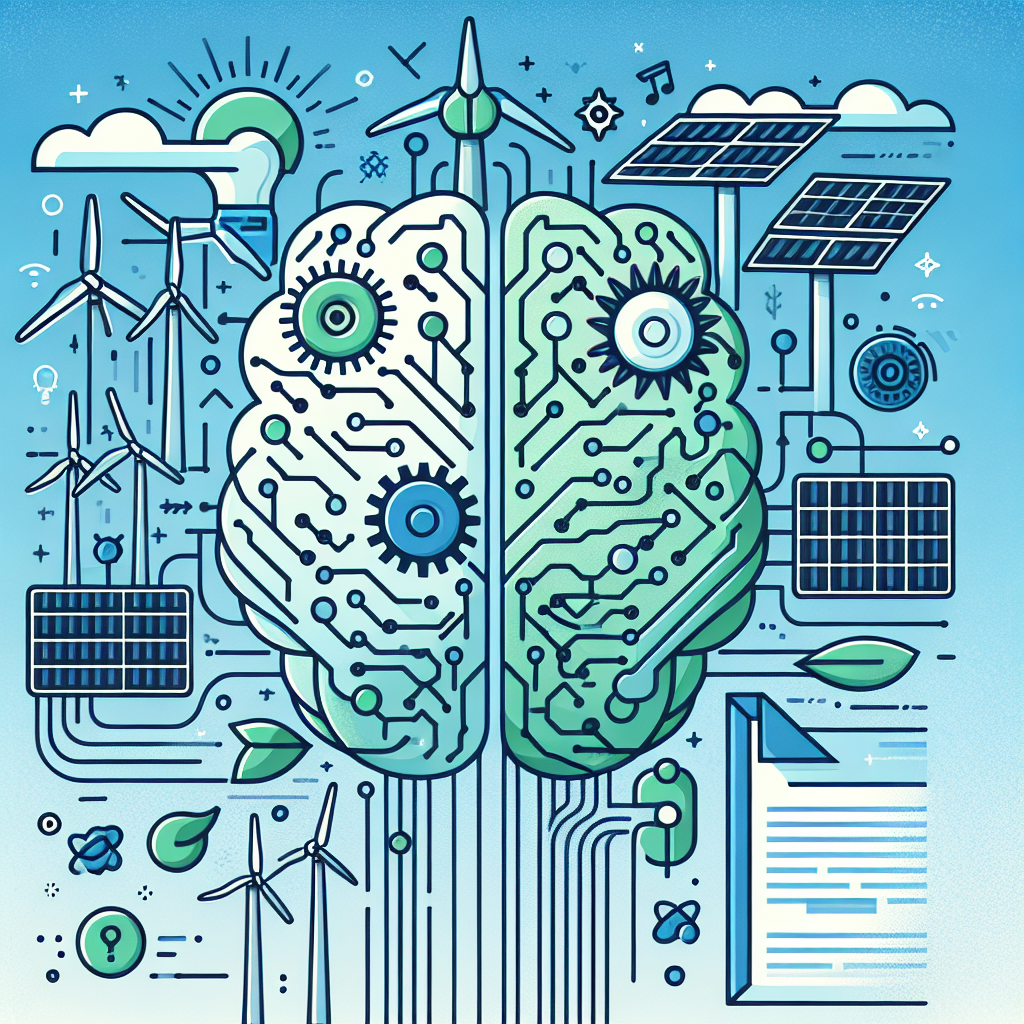The Intersection of AI and Renewable Energy Policy and Regulation
The use of artificial intelligence (AI) in the renewable energy sector is on the rise, with innovative technologies and applications being developed to improve the efficiency and effectiveness of renewable energy production and distribution. As AI continues to advance, it is becoming increasingly integrated into renewable energy policy and regulation, shaping the way governments and organizations approach the transition to clean energy sources.
AI technologies have the potential to revolutionize the renewable energy sector by optimizing operations, reducing costs, and increasing the reliability of renewable energy sources. By analyzing vast amounts of data in real-time, AI can help identify trends, predict energy demand, and optimize the performance of renewable energy systems. This can lead to more efficient energy production, lower costs, and reduced environmental impact.
In the realm of policy and regulation, AI is also playing a significant role in shaping the future of renewable energy. Governments and regulatory bodies are increasingly turning to AI to develop more effective policies and regulations that promote the growth of renewable energy sources. AI can help policymakers analyze complex data sets, model different scenarios, and predict the impact of policy decisions on energy markets and the environment.
One of the key ways in which AI is being used in renewable energy policy and regulation is through the development of predictive models. These models can help policymakers forecast future energy demand, assess the impact of different policy options, and identify potential risks and opportunities in the renewable energy sector. By using AI to analyze data and simulate different scenarios, policymakers can make more informed decisions that support the growth of renewable energy sources.
Another important application of AI in renewable energy policy and regulation is in monitoring and compliance. AI technologies can help governments and regulatory bodies monitor the performance of renewable energy projects, track compliance with regulations, and identify potential issues or risks. This can help ensure that renewable energy projects are operating efficiently and in compliance with environmental standards, ultimately leading to a more sustainable energy future.
Overall, the intersection of AI and renewable energy policy and regulation is driving innovation and shaping the future of clean energy production. By leveraging AI technologies, governments and organizations can develop more effective policies, optimize renewable energy systems, and accelerate the transition to a more sustainable energy future.
FAQs
Q: How is AI being used in renewable energy production?
A: AI is being used in renewable energy production to optimize operations, predict energy demand, and improve the performance of renewable energy systems. By analyzing data in real-time, AI can help identify trends, predict energy demand, and optimize the performance of renewable energy systems, leading to more efficient energy production.
Q: How is AI shaping renewable energy policy and regulation?
A: AI is shaping renewable energy policy and regulation by helping policymakers develop more effective policies, analyze complex data sets, model different scenarios, and predict the impact of policy decisions on energy markets and the environment. AI technologies are being used to develop predictive models, monitor compliance, and support the growth of renewable energy sources.
Q: What are the benefits of using AI in renewable energy policy and regulation?
A: The benefits of using AI in renewable energy policy and regulation include more informed decision-making, optimized energy systems, reduced costs, and increased sustainability. AI technologies can help governments and organizations develop more effective policies, monitor compliance, and accelerate the transition to a more sustainable energy future.

